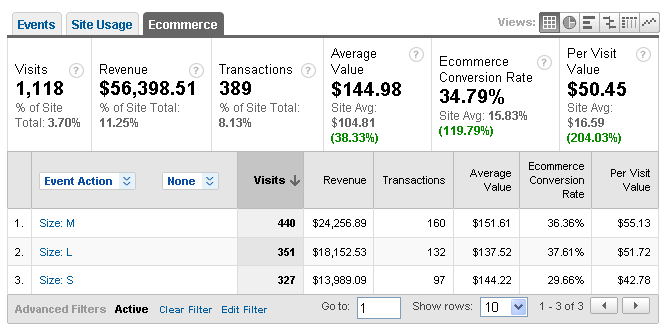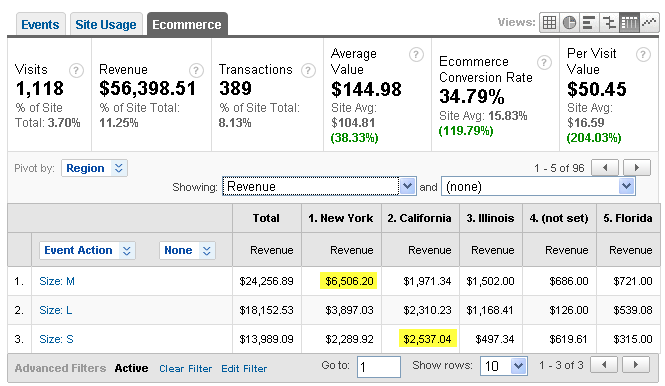Product attribute segmentation and web analytics
UncategorizedThis post may be applicable mainly to online apparel retailers, but I thought it would be interesting to look at product attributes that are consistent across products, such as size or color. I also know that some retailers only use a base SKU per product, but not for each product attribute, so tracking these different attributes on a product level could help with anticipating the right inventory levels.
The main reason for aggregating product attributes is to get a lot of data! I would like to start with large segments so that when I further slice & dice the data I still get decent-sized segments that are sufficiently different from each other and worth targeting. Somewhere in between no segments (average data = average results) and tiny segments (longtail keywords with 100% conversion rate = low impact due to low traffic). For those of you whose products don’t lend themselves to product attribute aggregation and segmentation, I still recommend that you approach segmentation this way.
A practical example would be to see all small, medium and large T-shirt sizes:

And this is what it might look like in web analytics:

So we are selling mainly medium and large T-Shirts. Makes for a nice report, doesn’t it, but I would then segment and dig a little deeper. How about by geography?

Here we can see that there are geographical differences and that folks from New York buy mainly medium, but those from California buy mostly small. I am not claiming that these differences are statistically valid, but doing this type of segmentation analysis should lead to interesting hypotheses for further testing.
How would you then use this data for optimization? You can do geographical targeting in your search marketing campaigns or directly on your landing pages. Think about highlighting your products with the most relevant attributes. If you do have color product attributes, how about showing the most popular color by default to the visitor segment you are targeting? You could also use this type of data in your email marketing to create more relevant campaigns.
Happy analyzing!